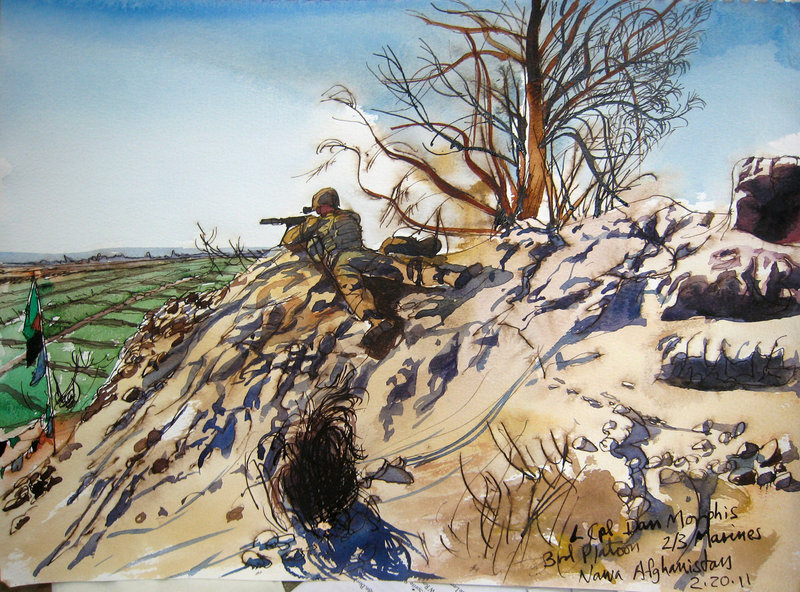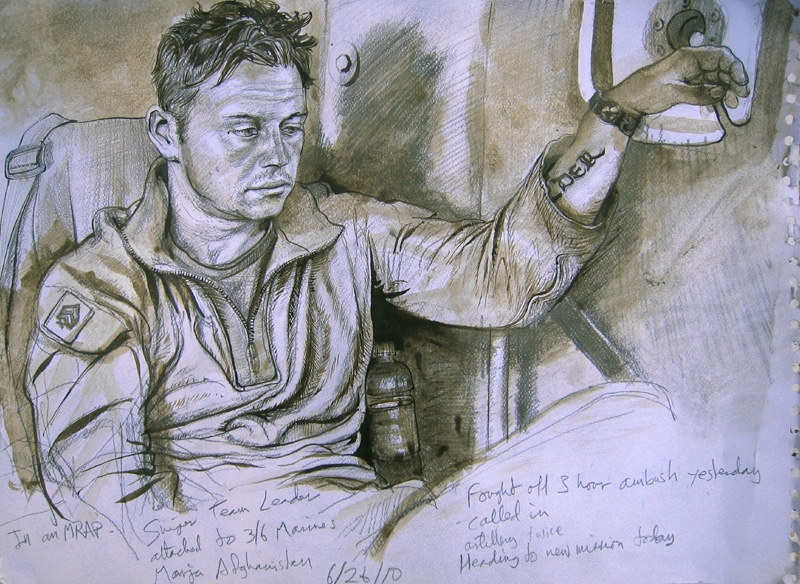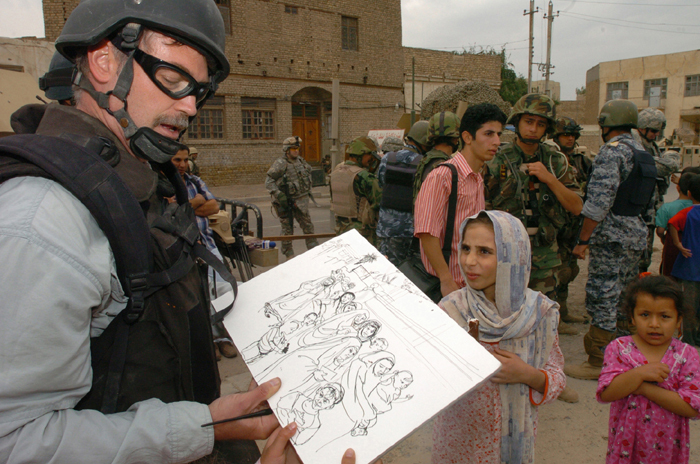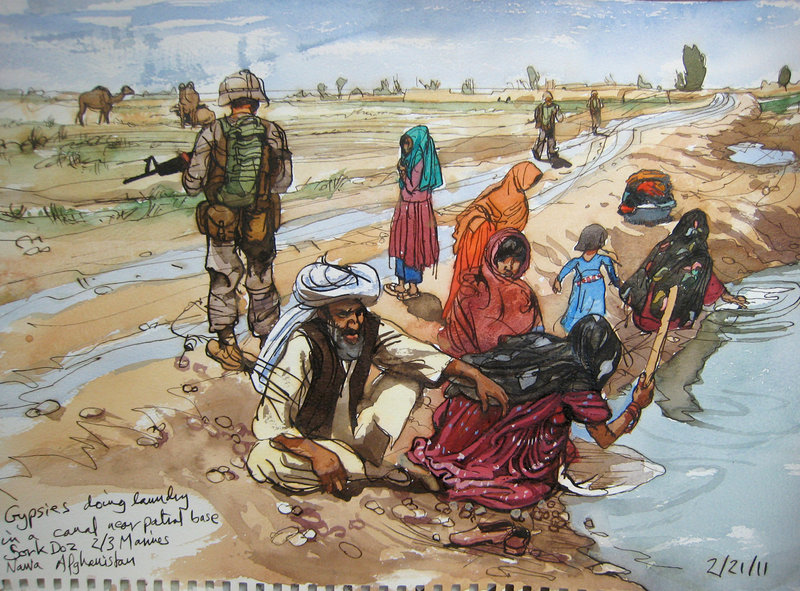ROCKPORT – The drawings capture the space between the bombs.
Steve Mumford, a painter who splits his time between New York and Maine, has made eight trips to Iraq and Afghanistan since 2003. With quick ink drawings, he captures the daily lives of the people who live in the war zones and the American Marines on duty.
His inspiration for the project is Winslow Homer, the famous American landscape painter who began his career making illustrations from the front lines of the Civil War for Harper’s Weekly.
All these years later, Mumford is doing much the same, though for different reasons. Homer did it out of necessity, and he was one among hundreds of illustrators on or near the front lines. They observed the action and illustrated scenes to give readers perspective.
In our time, technology has rendered front-line illustrators obsolete. Digital photography not only allows us to capture action precisely, but to transmit images at near-instant speed so we share context for the war stories as they unfold.
Mumford is showing a collection of his war-zone drawings this summer at the Center for Maine Contemporary Art in Rockport. The exhibition, “Embedded,” is part of the Maine Drawing Project, a statewide effort among museums and galleries to call attention to the wealth of drawings in Maine collections and to the great tradition of drawing in the state.
Mumford turns back the clock some 200 years on a subject that is now digitized. “It’s such an elemental act,” he said. “You can get a powerful and strong connection looking at a drawing, and the technology is so primitive.”
His illustrations show women doing laundry, doctors performing amputations and soldiers in the mess hall. They flesh out the war stories that we read about in the papers and hear on the news. He was less interested in the front-line action and more concerned about recording the lives of residents and soldiers in the lull between the fighting.
“I saw these drawings as something between art and reporting,” said Mumford. “I didn’t have enough money to hire translators and minders, so I decided to just wander and, in a random way, draw whatever I saw and whatever happened. It seemed like a better strategy rather than seeking out violence, per se.”
Mumford, 50, spends his summers in Maine. He and his wife, artist Inka Essenhigh, have a place in Tenants Harbor. He’s the nephew of Maine painter Charles DuBack.
CMCA curator Suzette McAvoy discovered Mumford’s work during a studio visit with Essenhigh at their summer home.
“He had just gotten back from Afghanistan, and he showed me a stack of these fantastic pen-and-ink drawings that he had done of soldiers on patrol on the streets and on the sidewalks of the cities,” McAvoy said. “I thought, ‘This is our drawing show.’ “
As much as she liked Mumford’s drawings, McAvoy also appreciated his story: A working contemporary artist inspired by one of the greatest artists in American art history, both with deep Maine roots, doing similar work.
Mumford made his first trip to Iraq in 2003. He bought a ticket to Kuwait City, then hitched a ride with French journalists who had a spare seat. He arrived in Iraq on the now-historic day that celebrants toppled the Saddam Hussein statue in Baghdad.
Mumford’s project unfolded largely by circumstance. He did not have a specific plan, other than to record what he saw. He spent about a month in Iraq on that first trip, and returned five more times. His last trip there was in 2008. He’s also been twice to Afghanistan, including earlier this year.
The drawings are finished pieces, and stand on their own. Some also serve as studies for larger oil paintings — painting is Mumford’s primary focus as an artist.
His war works have received notice nationally and in Canada. The Canadian press Drawn and Quarterly published a collection of his drawings. Harper’s Magazine also picked up on his project, and published several of his pieces. In August, Harper’s will feature Mumford’s work from Afghanistan; the magazine has also sent him to Louisiana to illustrate the Gulf oil spill.
The Pritzker Military Library in Chicago gave Mumford an exhibition in 2007, and in February 2010, he had a solo show at Postmasters Gallery in New York.
Mumford admits a long fascination with war-time art, and it started with Homer. Mumford grew up in Boston, and became familiar with Homer as a young boy. Homer infused his cultural background, and informed his sensibilities as an artist. He’s always appreciated Homer’s lyrical style, as well as his flair for dramatic storytelling.
Mumford attended the Boston Museum School in the 1980s, where this kind of representational work was considered regressive, if not hopeless uncool.
“It took me a long time to realize what’s cool is what you need to do,” he said. “I wasted a lot of time thinking I had to be an abstract expressionist when all I really wanted to do was tell stories.”
Staff Writer Bob Keyes can be contacted at 791-6457 or at:
bkeyes@pressherald.com
Follow him on Twitter at:
twitter.com/pphbkeyes
Send questions/comments to the editors.






